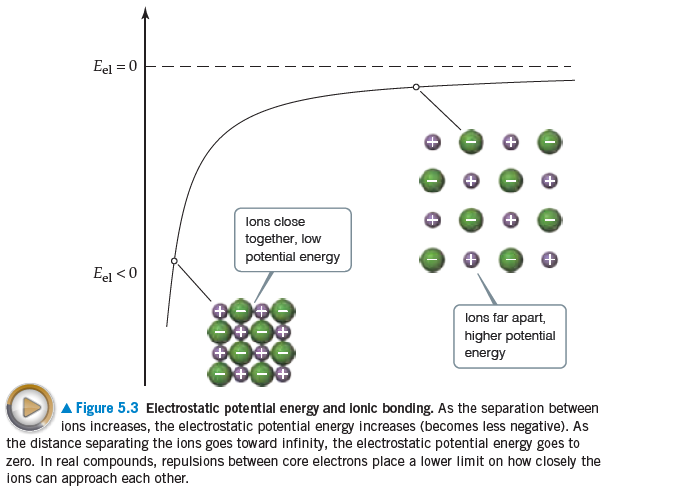Eel = 0 lons close together, low potential energy Eel <0 lons far apart, higher potential energy A Figure 5.3 Electrostatic potentlal energy and ionic bonding. As the separation between ions increases, the electrostatic potential energy increases (becomes less negative). As the distance separating the ions goes toward infinity, the electrostatic potential energy goes to zero. In real compounds, repulsions between core electrons place a lower limit on how closely the ions can approach each other.
Types of Chemical Bonds
The attractive force which has the ability of holding various constituent elements like atoms, ions, molecules, etc. together in different chemical species is termed as a chemical bond. Chemical compounds are dependent on the strength of chemical bonds between its constituents. Stronger the chemical bond, more will be the stability in the chemical compounds. Hence, it can be said that bonding defines the stability of chemical compounds.
Polarizability In Organic Chemistry
Polarizability refers to the ability of an atom/molecule to distort the electron cloud of neighboring species towards itself and the process of distortion of electron cloud is known as polarization.
Coordinate Covalent Bonds
A coordinate covalent bond is also known as a dative bond, which is a type of covalent bond. It is formed between two atoms, where the two electrons required to form the bond come from the same atom resulting in a semi-polar bond. The study of coordinate covalent bond or dative bond is important to know about the special type of bonding that leads to different properties. Since covalent compounds are non-polar whereas coordinate bonds results always in polar compounds due to charge separation.
If the ions in the figure on the right were released and allowed
to move, would they move closer together or farther apart?

Trending now
This is a popular solution!
Step by step
Solved in 2 steps with 1 images









